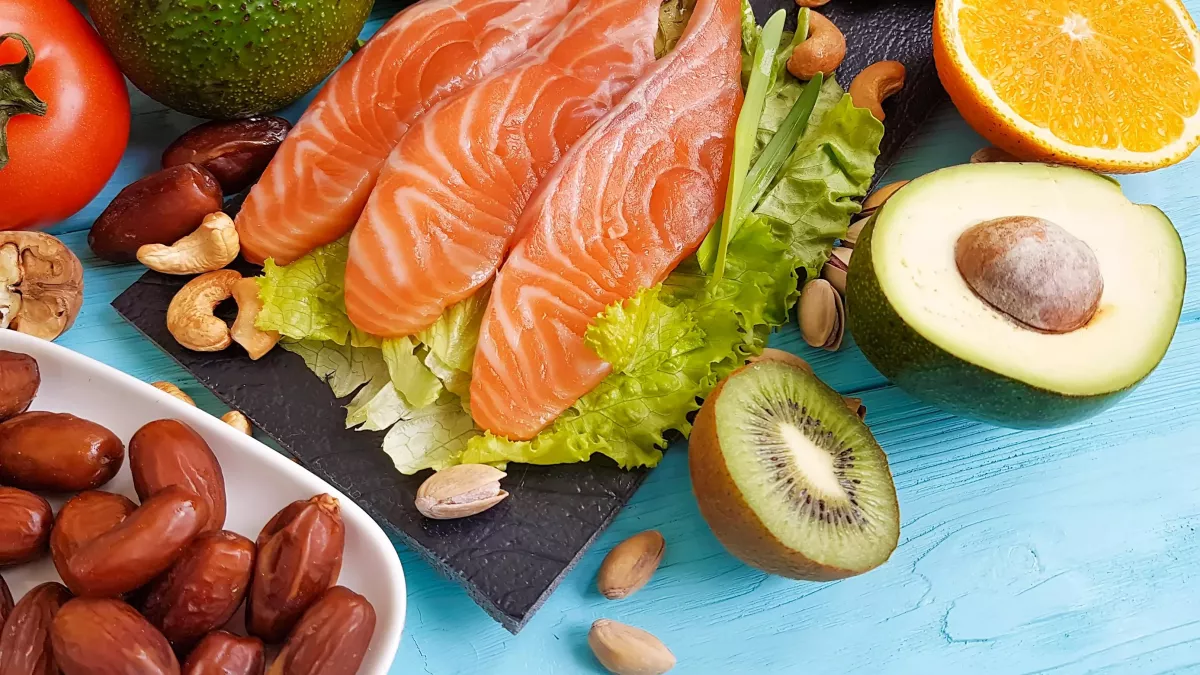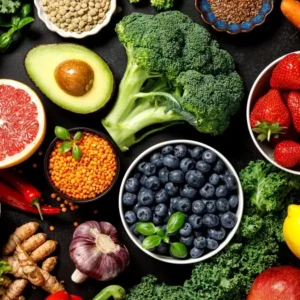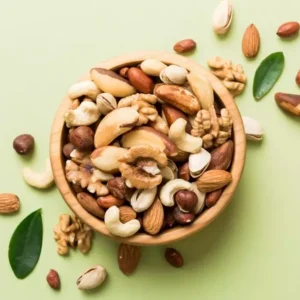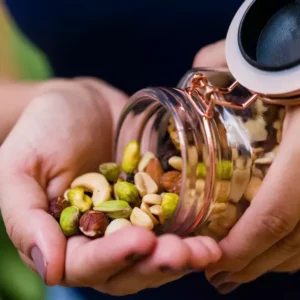Vitamin B1 or thiamine: what is it for?
Thiamine is also called vitamin B1, it is essential for transforming carbohydrates into energy in the body. It cannot be synthesized by the human body, so it is essential to provide it through food. This vitamin has interactions in the body with vitamins B2, B3, B5, B6 and B9.
- Water-soluble vitamin essential for energy production and the nervous system
- Essential vitamin that cannot be synthesized by humans
- Converts to thiamine pyrophosphate (TPP) in the liver
- Involved in the treatment of various illnesses (alcoholism, fatigue, malnutrition, etc.)
- Found in large quantities in seeds and nutritional yeast
Why consume foods rich in vitamin B1?
Benefits
Maintenance of the nervous system
By intervening in the Krebs cycle, thiamine participates in the production of energy from carbohydrates, which are themselves mainly used by the brain and the nervous system.
Participates in muscle functioning
Vitamin B1 is involved in the functioning of all the muscles of the body and will therefore facilitate digestion by stimulating the muscles of the digestive sphere.
Energy production
Vitamin B1 is transformed into TPP or thiamine pyrophosphate in the liver, this is its active form. Thiamine pyrophosphate is essential for the proper functioning of metabolisms and certain enzymes. It allows, among other things, the production of energy from sugars.
Alcohol degradation
Thiamine is directly involved in the breakdown of alcohol molecules. This is why supplementation is often recommended to help with withdrawal in cases of chronic alcoholism.
Vitamin B1: what foods is it found in?
Foods rich in vitamin B1 can be of plant or animal origin. These are generally common foods that are easily accessible and widely consumed in developed countries.
Here is a list of 20 foods rich in vitamin B1 (or thiamine):
|
Food |
Portion |
Amount of thiamine (mg) |
|
Brewer’s yeast flakes |
100g |
30 |
|
Sunflower seed |
100g |
2,3 |
|
Wheat germ |
100g |
2,1 |
|
Soybeans |
100g |
1,3 |
|
Baker’s yeast |
100g |
1 |
|
Fish eggs |
100g |
1 |
|
Macadamia nuts |
100g |
1,2 |
|
Salami |
100g |
0,9 |
|
Poppy seed |
100g |
0,8 |
|
Pistachio |
100g |
0,8 |
|
Bacon |
100g |
0,7 |
|
Chipota |
100g |
0,7 |
|
Ham |
100g |
0,7 |
|
Haricot sec |
100g |
0,7 |
|
Pecan nuts |
100g |
0,6 |
|
Paprika |
100g |
0,6 |
|
Chorizo |
100g |
0,6 |
|
Cumin seed |
100g |
0,6 |
|
Brazil nut |
100g |
0,6 |
Use of vitamin B1
Recommendations are 1.3 to 1.5 mg of thiamine per day for a healthy adult.
Where to find vitamin B1 as a dietary supplement?
Today, there are many food supplements based on thiamine in pharmacies or specialized stores. We generally recommend taking 100 to 1000 mg per day to help meet the body’s needs for thiamine. Taking food supplements based on thiamine is particularly indicated in cases of intense fatigue or malnutrition. It is also recommended during withdrawal from chronic alcoholism and after certain digestive surgeries, in cases of malabsorption. Please note, however, that food supplements should in no case replace a varied and balanced diet. Ask your doctor for advice.
Side effects of thiamine
Consequence of thiamine deficiency
Vitamin B1 deficiency results in loss of appetite, severe fatigue and weight loss. In cases of severe malnutrition, the deficiency can result in neurological and cardiac problems.
Consequences of excess thiamine
There is no toxicity for vitamin B1 since the body eliminates it through the urine in the event of excessive consumption.
 Receive every day
Receive every day
advice from our experts
to take care of you

Interactions with other nutrients
Certain foods and medications can affect the proper assimilation of vitamin B1 and its action in the body. This is the case for certain cruciferous vegetables and raw fish. Excessive alcohol consumption also inhibits the action of thiamine. Finally, certain medications used to treat gastroesophageal reflux have a deleterious effect on the metabolism of vitamin B1.
Chemical properties
The chemical formula of thiamine is C12H17N4OS, its molar mass is 265.355 g/mol, and its decomposition temperature is 248°C. It is a water-soluble vitamin essential for humans, however it is synthesized by plants and bacteria.
Thiamine is a precursor of thiamine pyrophosphate (TPP), its activated form in the liver. TPP is also an essential co-enzyme at the metabolic level. Indeed, in the Krebs cycle, it allows the transformation of carbohydrates into energy. It is also involved in the functioning of the nervous and muscular systems.
Historical
Nutrient History
Thiamine was the very first vitamin to be isolated in 1912. Its accidental discovery was made during an attempt to find a cure for a disease called AC. aberica.
Its chemical formula was established in 1931 by R. Williams. Five years later in 1936, the synthesis of vitamin B1 was carried out by the scientist Andersag.
Today, thiamine is recognized by the WHO (World Health Organization) as one of the essential medications for humans.

Dietitian Nutritionist
October 2017

Dietitian Nutritionist
June 2018
97% Readers found this article helpful And you ?
Was this article useful to you?











